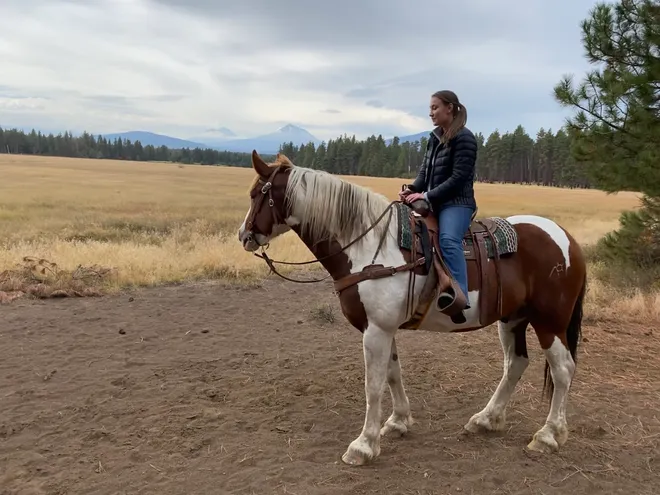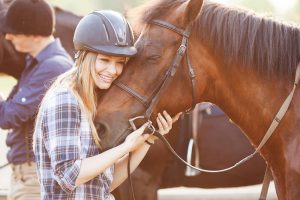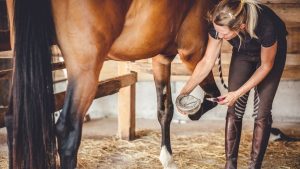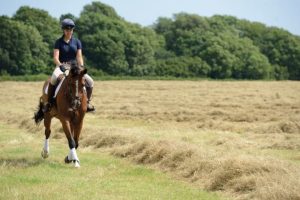Trail riding is a fun and different activity for both people and horses. Horseback riding allows you to connect with nature, explore new areas, and deepen your connection with your horse. Either way, regardless of your horse experience, trail riding is a great way to get out of the arena and enjoy the outdoors. This article covers the most important parts of trail riding, from preparation to safety tips, so that you and your horse have an enjoyable time.
Being Prepared is Essential:
Before you get on your bike, you have to plan a lot. First, make sure your horse is mentally and physically ready for the journey. By training regularly in the arena and on different surfaces, your horse becomes stronger and more confident. Slowly introduce your horse to the sounds and sights of the road to reduce stress.
Have the right equipment ready. Saddles, bridles, and other equipment suitable for trail riding must fit the horse properly. You may need to wear a hat and splint boots for your horse’s legs to protect yourself. Bring what you need, such as a first aid kit, water, snacks, and a route map.
Choosing the Right Trail:
Choosing the right route is very important to drive well. Start with a well-maintained, clearly marked track that is appropriate for your horse’s skill level. Review local route options and consider factors such as trail length, terrain, and difficulty. Some routes may have rules about their use, so make sure you understand the rules or restrictions.
If you’ve never ridden a dirt bike before, start with shorter, easier routes. As you and your horse become more experienced, you’ll move on to more difficult routes. Always let someone know where you are going and when you plan to return, especially if you are going somewhere else.
Safety First:
Safety comes first when riding. Before riding, perform a safety check on your horse by checking its feet, direction, and general health. Make sure your horse has shoes that are appropriate for the area you are riding.
If you can, ride with a friend. Having friends with you can make you feel safer and more comfortable, especially on roads you’ve never traveled before. Also, let someone know where you are going and when you expect to return.
While driving, stay alert and watch for potential hazards such as uneven terrain, low-hanging trees, or animals. Stay away from people using the route, such as walkers or cyclists, and follow the rules of the route.
How to Build Trust:
When you go horse riding, you and your horse can improve your relationship. If your horse has never been to the track, be patient and helpful. Give them time to adjust to the new location before exposing them to all the new areas again.
To ensure that your horse performs well on the track, use positive feedback and give him treats. This will help you trust and believe in each other, making future rides more enjoyable for both of you. Don’t forget to observe your horse’s body language. If they seem nervous, stop and reassure them before continuing.
Navigation and Trail Etiquette:
To successfully drive off-road, you need to know how to use basic navigation skills. Learn how to use route markers and maps and always stay on marked routes to minimize environmental impact.
Follow the route rules and give priority to other road users, especially people who are walking. Say hello to people and slow down or stop as you pass them. Abide by all written rules and laws for a specific route.
Take Care of the Environment:
As riders, we have a responsibility to protect our environment while riding off-road. Follow the marked trails and protect the plants and animals without harming them. Do not leave trash or other waste behind and do not disturb the natural environment.
Participate in volunteer and trail maintenance programs to give back to the equestrian community and ensure the trail system remains accessible for generations to come.
Conclusion
Both people and horses have fun and feel better after an outdoor ride. If you plan, stay safe, and care about the environment, you can enjoy the beauty of nature with your horse while bonding with him or her. Get on horseback, discover new trails, and go on exciting journeys with your horse.
FAQs
1. Is trail riding a good way to start?
Everyone can enjoy trail riding, regardless of their skill level. For beginners, it’s best to start with shorter, easier trails and then work your way up as their riding skills and confidence grow.
2. What do you need to go horse riding?
The right saddle, bridle, and pegs for trail riding are all important equipment. For safety, wear a helmet and consider protective equipment for your horse, such as leg splint boots. Bring a route map, water, snacks, and a first aid kit.
3. How do I prepare my horse to ride on the trails?
Prepare your horse mentally and physically by practicing on different types of surfaces. To help them feel more confident, you can slowly introduce them to the sounds and sights of walking. Make sure your horse wears appropriate shoes and has a safety check before riding.
4. Are there rules for riding on trails?
Different routes have different rules, so it’s important to know what rules or restrictions are specific to the route you’ll be riding. Always be courteous when walking, give way to other hikers, and stay on marked trails.
5. Is it okay to cycle alone on the mountain road?
For safety reasons, it is best to ride with a friend, but experienced riders may choose to ride alone. In this case, let someone know where you are going and when you expect to return. Stay alert, aware of possible dangers, and put safety first.
6. How do I get my horse to trust me on the road?
If your horse has never been to the track, be patient and helpful. Use positive feedback to show appreciation for good behavior and slowly introduce them to new places. Pay attention to your horse’s movements and try to calm him down if he seems stressed.



